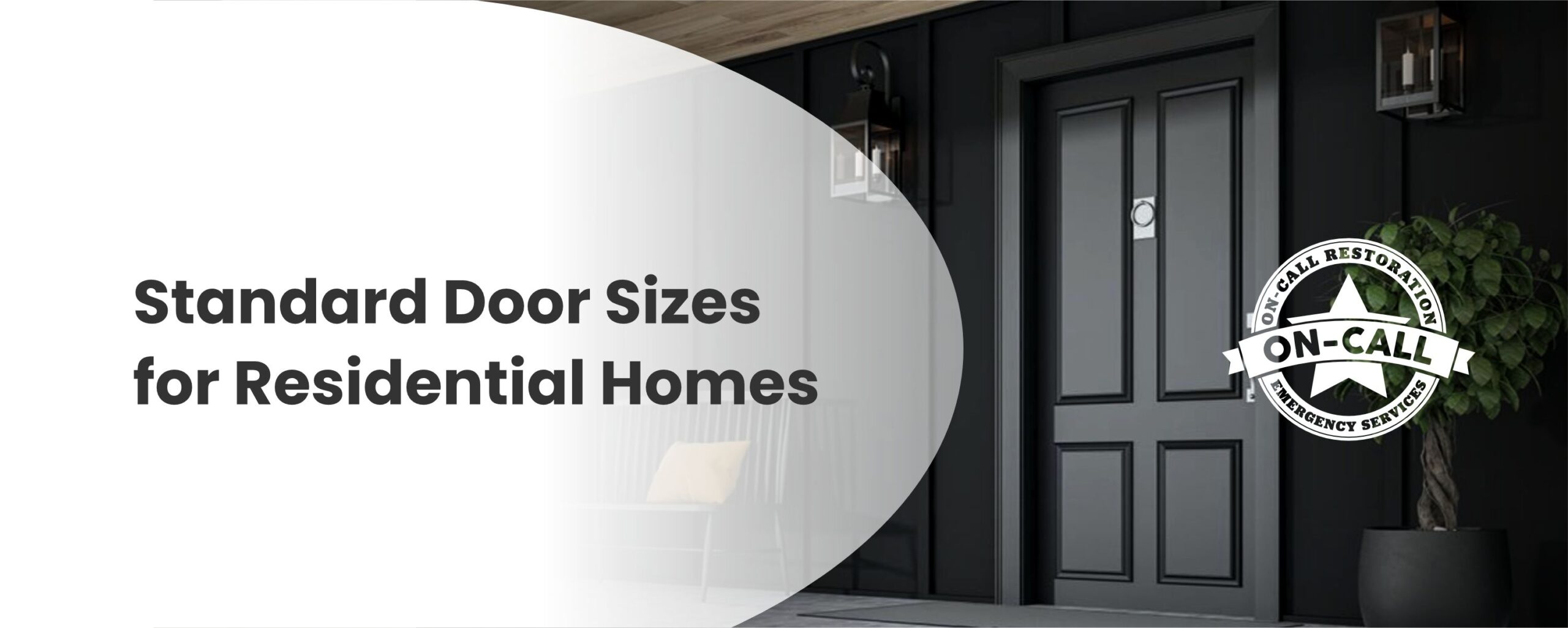Doors guard a building’s access points and help keep out storms, thieves, and pests. However, if you buy the wrong size, you may end up with uneven gaps or squeaky doors. This is why you should know the standard door sizes in your country before purchasing doors. It will save you time, energy, and money.
Standard door sizes are the sizes approved in building codes for properties and they differ by country. In this article, we will explain the standard door sizes for residential homes in the United States. This will include the standard sizes for different types of doors to make door-shopping easier for you.
How Do Standard Door Sizes Work?
Manufacturers and contractors don’t refer to door sizes by their full measurements. Rather, they have a naming system that is similar to standard window sizes. This naming system combines the door’s width and height into a set of numbers. For example, let’s say a door is 2 feet 8 inches wide and 6 feet 5 inches tall. They will refer to it as a 2/8, 6/5 door. This is pronounced “two eight, six five.”
The measurements for standard door sizes don’t include other components of the door, such as the door frame, jamb, or opening. It only includes the door panel. If you’re buying a pre-hung door, it will include the door’s hinges and frames. However, a door slab doesn’t have those extras.
What Are Standard Door Sizes in Residential Homes?
Many manufacturers now make doors at the same height. This is because most codes require doors in the United States to be a minimum of 80 inches or 6 feet tall. However, many high-end homes have 90-inch-tall doors to account for higher ceilings and more space. You will likely need a different installation process if your door is taller than the standard door height.
Door sizes rarely differ in height. The main difference lies in their width. Nevertheless, door widths are still standardized to a degree, as doors are usually required to be at least 24 inches wide.
Here are the standard door sizes for residential homes:
- Interior Doors
Interior doors are the doors that separate parts of your home. For instance, bedroom and bathroom doors. The standard size for interior doors is 32 inches wide and 80 inches tall or 2/6, 6/6. While you can modify this measurement, your interior doors should be at least 24 inches wide and 80 inches tall.
You should consider the following measurements for specific interior doors in your home:
- Bathroom Doors
Bathrooms are often smaller than bedrooms, and as such, the space for a door may be a little narrower. Bathroom doors can be about 24 to 28 inches in width and the standard 80 inches in height, which is a 2/0 or 2/3, 6/0 door.
- Closet Doors
Many closets have just enough space to hold some clothes. So if you don’t have a walk-in closet, you can stick to a standard size of 24 inches wide and 78 inches tall. This is a 2/0, 6/5 door.
- Bedroom Doors
Your bedroom doors should be about 32 inches as this is wide enough for the average person to walk through without issues. It should also be at least 80 inches tall, but you can always opt for something a little higher. A standard size will be a 2/6, 6/0 bedroom door.
- Entry Doors
These are also known as exterior doors and they lead into your home from outside. For example, your front, back, or balcony door. These doors may be a little wider than interior doors. Exterior doors have a standard size of 3 feet width and 6 feet 8 inches height. Therefore, a standard entry door is a 3/0, 6/8 door.
- Sliding Glass Doors
Sliding glass doors are great for places like patios because they allow a ton of natural light to flow in. The standard width for a sliding glass door is between 5 and 6 feet while the standard height is a minimum of 6.6 feet. However, many sliding glass doors are about 7 feet tall. You can get a 5/0, 6/6 or 6/0, 6/6 standard sliding glass door.
- French Doors
French doors are another popular entry door, but they can also be used as interior doors. They have a standard width of 35 inches and a standard height of 80 inches. However, if you have double French doors, their standard width starts at 60 inches. A standard-sized French door will be 2/9, 6/0 while double French doors will be 5/0, 6/0.
- Garage Doors
Garage doors can be quite wide because they are built to accommodate cars. Therefore, they are usually at least 6 feet wide and 7 feet tall. This makes them a standard size of 6/0, 7/0. However, if your house is larger, you can get a standard 7/0, 8/0 garage door.
When Should You Get Custom-made Doors?
Formal written building codes did not exist in the United States until the 1700s. Therefore, if you live in a much older house, chances are your doorway doesn’t fit any standard door sizes. Additionally, some homes have special features that don’t accommodate a standard door size. Or maybe you just want a different kind of door. In any of these scenarios, it is best to have a door manufacturer create a custom door for your home.
Custom-made doors are often more expensive than standard door sizes. This is because many manufacturers make standard-sized doors in bulk, unlike custom doors that must be specially made. However, the extra cost is worth getting doors that fit right and don’t leave gaps that make your home less energy efficient.
Conclusion
Standard door sizes make it easier for homeowners like you to purchase, replace, and install new doors. While they may seem confusing at first glance, once you understand their naming system, it becomes easier. The naming system for door sizes combines the width and height of the door for ease.
When choosing a standard door size, you should check if the door you’re getting is pre-hung or simply a door slab. This will help you avoid taking the wrong measurements. It will also prevent creaking and squeaky doors that aren’t the right fit for your home.
Sometimes, you need a quick fix for a broken entry door such as your front or back door. Emergency board-up services can provide a sturdy temporary solution until you are able to install a new door. Our lines are always open at On-Call Board Up so reach out to us today to get started!




